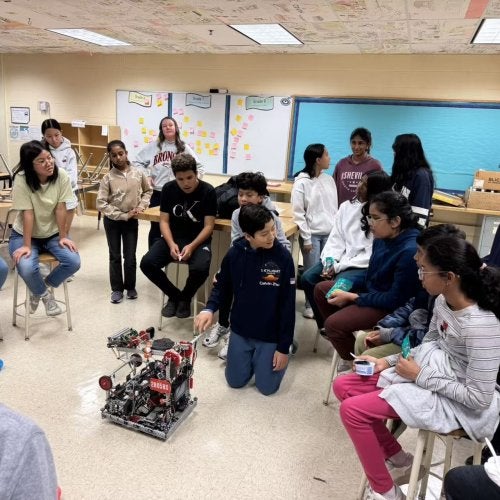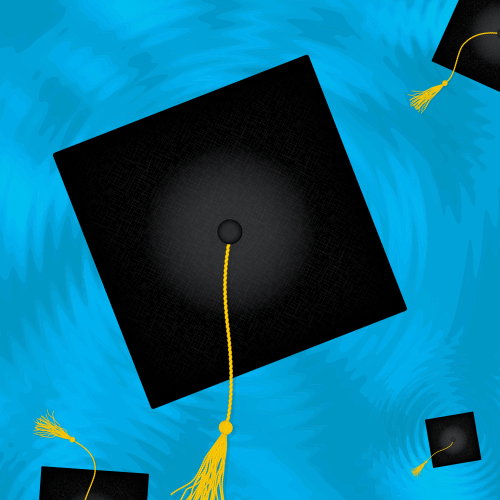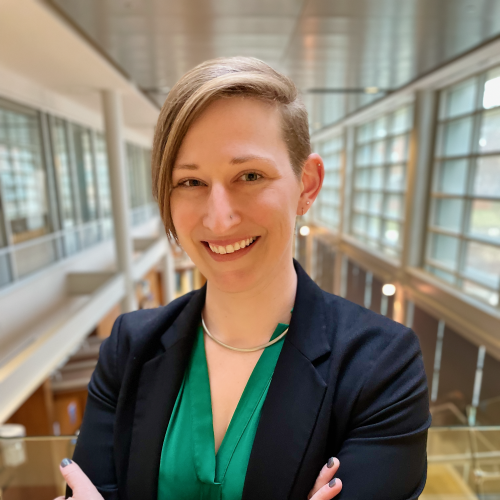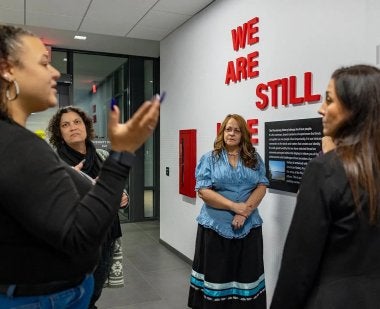
Growing up in Charles County, Md., Anjela Barnes ’04 loved swimming, fishing, and paddling in Mattawoman Creek, just off the Potomac River.
As a Piscataway, “being outdoors is such an important part of our culture,” said Barnes, now the executive director of the Accokeek Foundation. “I remember as a kid, digging into the muck to find clams,” as her ancestors did in this area for thousands of years.
This fall, Barnes took University of Maryland students to the creek as part of “Where the Waters Blend: Contemporary Indigenous Perspectives on History, Traditions, and Modern Issues” (HNUH268W), a new Honors College course. Barnes is one of six Piscataway co-instructors of the course.
Prior to going out on kayaks, students were given the chance to offer tobacco in gratitude for the land and water by Mario Harley, vice chair of the Piscataway-Conoy Tribe. Out on the creek, they learned about the abundant variety of native plants, such as wild rice and tuckahoe, their characteristics and their relevance to the health of the ecosystem.
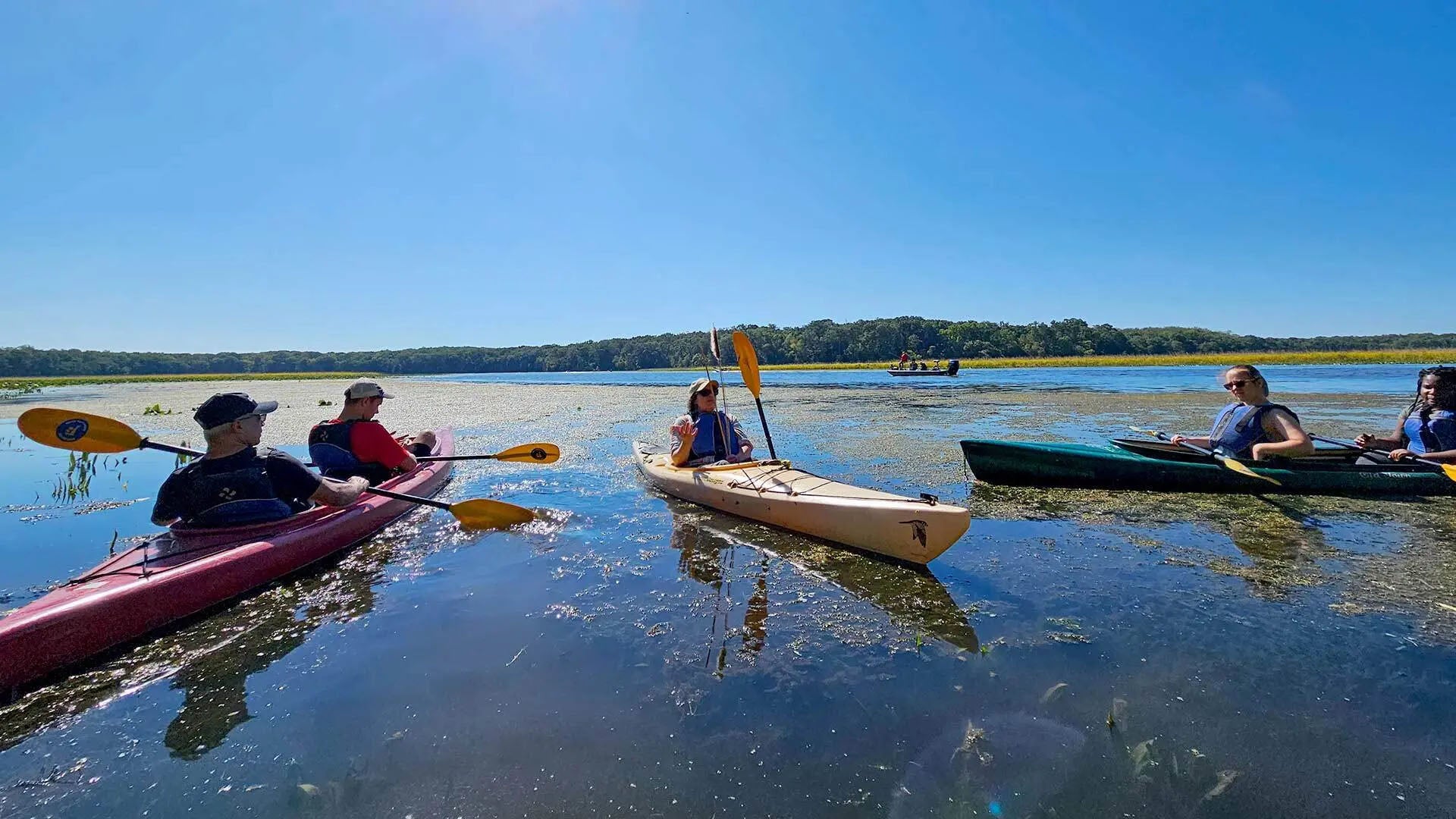
“Piscataway history is Maryland history and United States history,” said Associate Clinical Professor Angela Stoltz Ph.D. ’19 of the College of Education, who is the university faculty co-lead of the class and is a citizen of the Whitetop Nation.
The course is UMD’s first on Maryland’s Indigenous people that’s codeveloped and cotaught by Piscataway-Conoy citizens. It covers Indigenous traditions and history, struggles during European colonization and contemporary issues. Fittingly, it’s taught in Yahentamitsi dining hall, the first building officially named in the Algonquian language spoken by the tribe (it means “a place to go to eat.”)
“As a land-grant university on the homeland of the Piscataway, it’s important that it’s not just a one-off relationship,” said the class’s lead Piscataway instructor, Tiara Thomas, who serves as education and interpretation director of the Accokeek Foundation, located in Piscataway Park. “We are still here and still thriving. We are working to make sure our presence is known throughout the state and beyond.”
Native Americans have lived in Maryland for thousands of years. The name “Piscataway” means “where the waters blend,” and its people largely lived between the Potomac River, the Chesapeake Bay and the Blue Ridge Mountains, fishing, hunting and living off of the land. After the English arrived in the early 1600s, the tribe’s population declined amid disease and expropriation of traditional lands. By the 1940s, fewer than 5,000 people of American Indian descent lived in nine Southern Maryland communities. In recent decades, Piscataway descendants pushed for formal acknowledgment, resulting in an executive order from Gov. Martin O’Malley in 2012 that recognized the Piscataway Indian Nation and the Piscataway-Conoy tribes by the state.
Developing the UMD class materials from state, national and tribal archives and records took more than a year. Tribal citizens combined knowledge from published and undocumented stories and artifacts, such as state and federal treaties, wampum belts made of shells, newspaper clippings, census reports and genealogical records, and conversations with community members, friends and family.
“There’s no real formal education for tribal history because a lot of it is just passed down orally,” said Barnes. “This was a good opportunity to reconnect with tribal community members, long-lost friends, and family, and learn some things we never knew ourselves.”
In a recent class, Piscataway-Conoy members—Thomas and her daughter Tamia Barnes, Joe Harley and Zelda Proctor—answered student questions on a panel. Topics included the relationship between the Piscataway and the Catholic Church, the role of music in tribal traditions, culturally significant foods, and the recent rise in colleges and other institutions acknowledging tribal history and land.
“It’s about time,” said Barnes. “There’s a lot of good intention. But it’s going to take deeper work to keep it going.”
Though the course is currently only offered to Honors students, the goal is to expand access to all UMD students by offering multiple classes and incorporating the current course as a foundational requirement for a Native American studies minor.
“Anyone who can take this class should,” said physics major Isaac Sherwood ’27. “When you learn about Native Americans in history class, it’s from a colonial perspective. Now, I have a different view of everything. Learning directly from the members of the tribe has been really cool.”
Top photo: From left: Piscataway-Conoy tribal members Tiara Thomas, Anjela Barnes '04 and Zelda Proctor discuss the new Honors College course about Indigenous Maryland with Assistant Clinical Professor Angela Stoltz (right). Photo by Riley Sims Ph.D. ’23
This story was adapted from an article that first appeared in Maryland Today.
